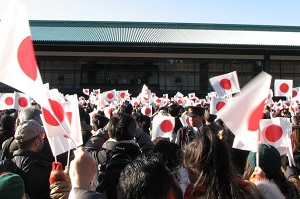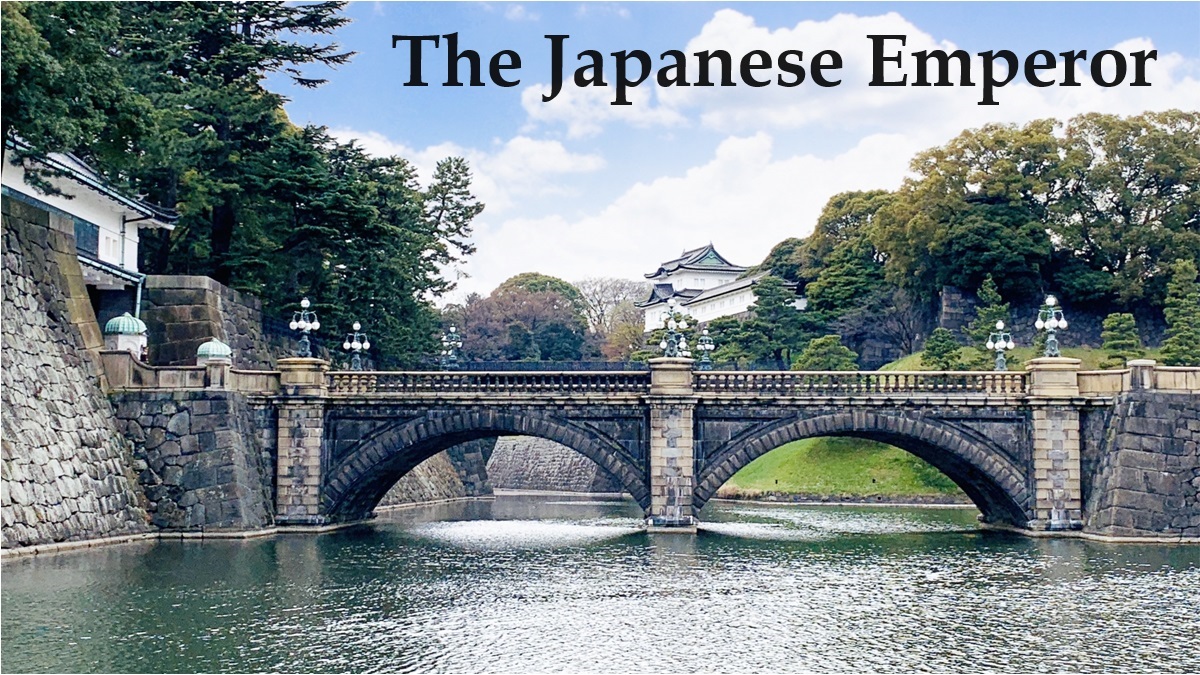The Japanese Emperor
Tenno - The Japanese Emperor

New Year Greeting of Imperial Family at the Imperial Palace
Tenno (天皇) is the Japanese word of "the Japanese Emperor".
It is never translated as "King".
It is said that the Westerners staying in Japan started using the word "emperor" for "Tenno" in the 17th century.
Now, the head of the nation called as "Emperor" is only Tenno of Japan in the world.
In fact, "Tenno" may have slightly different meaning from "emperor" or "king".
Since the ancient time, Tenno had been a head of Japan.
Now, Japan is in the reign of the 126th Tenno.
His name is Naruhito without family name.
Japanese people commonly call him "Tenno Heika" meaning "His Imperial Majesty the Emperor".
"Mikado" is another honorific title of Tenno.
The name was introduced and known to Europe in the 18th century.
But now, Japanese people use the words of "Tenno Heika" mainly.
The Japanese emperor system has been hereditary completely.
The first Tenno appeared in 660 B.C. and he founded Japan.
But that is not certain, and was described in Japanese mythology.
Currently, the 26th Tenno can be identified with a real person, and he existed in the early 6th century.
Since that, Japanese Emperor family has succeeded to the Imperial Throne continuously for at least 1,500 years.
After Japan lost the World War II in 1945, the Alleys thought the abolition of the Emperor system in Japan for the end of militarism nation.
But they were unable to ignore the Japanese mind that Tenno had been the great spiritual support for all Japanese people.
Therefore, in new Constitution of Japan, it was provided that Tenno was not an administrator but the symbol of the nation, and that was described as the first article in the Constitution.
The following is the article.
Article 1. The Emperor shall be the symbol of the State and of the unity of the people, deriving his position from the will of the people with whom resides sovereign power.
In addition, in the Constitution, it is provided that Tenno can't take part in political affairs.
Apart from that, Tenno has been very special to Japanese people.
Before the war, Tenno had been the living God.
But now, Tenno is emotional support for Japanese people.
Only Japanese people have such sensibility.
So, the Imperial Family is esteemed by Japanese people.
Japanese people are always watching the action with respect and thanks.
Japanese Era
In Japan, both Christian Era and Japanese Era are used as the representation of year.
Of course, you know Christian Era.
For example, the year of Tokyo Olympic Games was "2021 A.D."
The recent Japanese era names are as follows.
- Meiji (明治) : 1868 - 1912 (Meiji Tenno)
- Taisho (大正) : 1912 - 1926 (Taisho Tenno)
- Showa (昭和) : 1926 - 1989 (Showa Tenno)
- Heisei (平成) : 1989 - 2019 (Heisei Tenno)
- Reiwa (令和) : 2019 - now (Naruhito Tenno)
For example, 2024 is the 5th year of Reiwa.
And, as above, a Japanese era is the combination of two Kanji characters.
Since 645, Japanese era has been used for over 1,370 years.
Current "Reiwa" is the 248th name of Japanese era.
New Japanese Era starts from the year in which new Tenno is enthroned.
The rule has been applied since "Meiji".
(Before that, each Emperor often changed the Japanese era when bad things had occurred in the country.)
When the Tenno passed away or abdicated, new era started from the next day.
So, the first year of the new era is the same as the last year of the former era in most cases.
After that, the name of abdicated Tenno is changed to his era name.
Therefore, Japanese era is directly linked to Japanese Emperor System.
Following the demise of the Emperor Showa on January 7, 1989, Heisei started from the next day.
By the abdication of the Emperor Heisei, Reiwa started on May 1, 2019.
Now, we are in Reiwa era.
Tourist spots relating to the Imperial Family
Imperial Household Agency of Japanese government assumes the role of support and management for the Imperial Family.
Of course, we can't send a mail or a letter to the Imperial Family directly.
Imperial Household Agency is the window to the Imperial Family.
Tenno and the Imperial Family are living in Tokyo.
It is Kôkyo (Imperial Palace).
And the Imperial Family had been lived in Kyoto until 1868.
It is Kyôto Gosho (Kyoto Imperial Palace).
These conduct guided tours.
There are two old imperial villas in a suburb of Kyoto city.
These are reservation-only.

